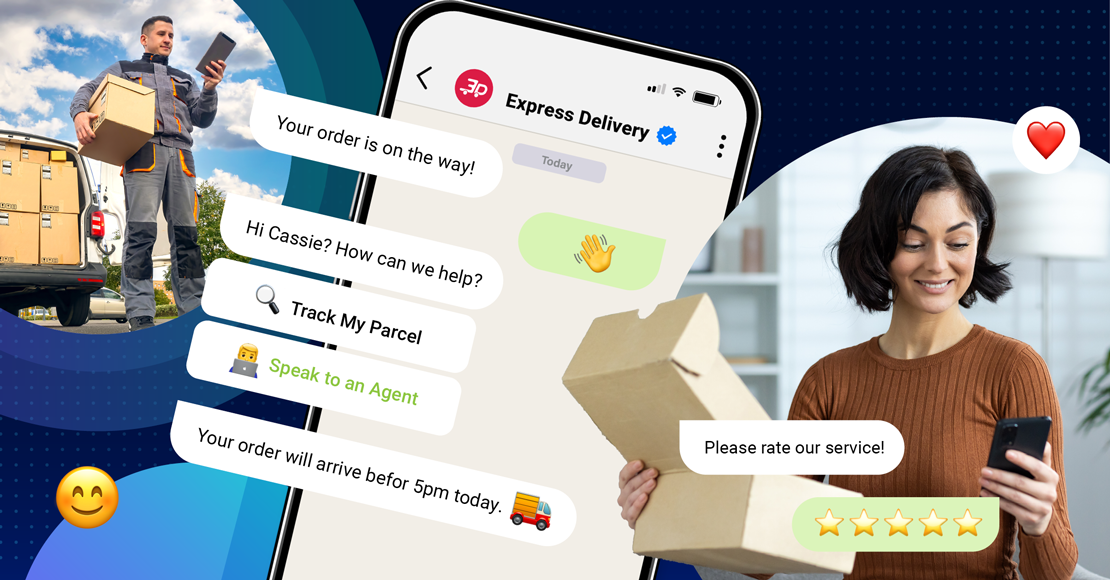
“No other messaging medium approaches SMS in its reach. Virtually every mobile phone is able to natively send and receive SMS messages. Subscribers need not possess a smartphone, download an application or include a data plan in their mobile subscription. This is especially relevant in many developing economies, where most subscribers have neither a smartphone nor a data subscription.” - Gartner
What we consider part of our daily lives hasn’t actually been around all that long. SMS is actually a multi-national tool developed over years, first simply for communication, and now a powerful marketing tool. Before you hit send on that next SMS, find out a bit about the interesting history of messaging and how it came to be.
What is SMS Messaging?
The Short Message Service – SMS – is a text message sent to people via their mobile devices. As the name suggests, the messages are short, limited to 160 characters, and can now include text, emojis, images and links. There is an additional format known as an MMS – Multimedia Messaging Service – which facilitates additional content such as gifs, videos, images and audio files with a much wider character limit of 5 000. Both formats – although SMS in particular – have become dominant forms of mobile marketing.
Early Origins
Back in 1973, American engineer, Martin Cooper, who led the team at Motorola which developed the first-ever mobile phone, made history by making a call in public using the handheld cellular. However, it took another two decades before the mobile phone become a prominent consumer good.
The German Intervention
From Cooper and his team, we cross the ocean into Germany in the 1980s where engineer, Friedhelm Hillebrand and his French colleague, Bernard Ghillebaert, were leveraging mobile phone technology to develop the written message. They quickly realised the need for condensed character length to fit into the existing signal formats, but considering the succinct messaging used in postcards and telegrams, this was doable. In fact, Twitter based its 140-character limit on this same theory.
The Finnish Intervention
The foundations had been laid for SMS messaging, but it was now up to the Finnish mobile communications engineer, Matti Makkonen, to develop this into the form of SMS we now know. Working at Nokia, Makkonen was able to develop SMS for the SMS-friendly handsets for which the company became renowned.
The English Intervention
It’s 1992 and we head on over to the United Kingdom where the first-ever text message is sent. British engineer, Neil Papworth, who was only 22 at the time, enjoyed the privilege of sending the inaugural text. Papworth worked as a software developer at Sema Group Telecomes - now Mavenir Systems – where he used his personal computer to send his friend at Vodafone, Richard Jarvis, a text message on his Orbitel 901 mobile phone. Being 3 December, the message read ‘Merry Christmas’. Unfortunately, Jarvis was unable to reply to this welcome message as his phone didn’t have a qwerty keyboard. This was also the same year that the world’s first mass-produced mobile phone, the Nokia 1011, was released. Papworth then went on to establish texting systems around the world, with predictive text technology developed in 1995 – ironically the same year that Papworth could afford his first mobile phone.
The History of Marketing
We have a clear understanding of the history of messaging, but the rise of SMS marketing didn’t come until quite a bit later. Interestingly, the first ever form of marketing dates back to 70 AD in Italy’s Pompeii where a mosaic features a branded container advertising it’s a fish sauce. Thus started centuries of marketing with the pinnacle now SMS marketing options.
Enter Mobile Marketing
From that first text message on a cold winter’s day in England, SMS quickly became a staple part of daily communication. But despite its invention back in 1992, it was only in the early noughties that marketing companies started really leveraging this platform for communication. Back to Finland for this part of the story, where a news provider decided to promote the breaking headlines using SMS with advertisements.
Mobile Marketing Gains Prominence
By the early noughties, mobile phone use was quite prolific and marketing companies were realizing that the best way to connect with consumers quickly, easily and at any time of day was via mobile phones. Before the development of apps, SMS messaging was the dominant form of communication, providing marketers with the ultimate solution in direct marketing.
Enter Mobile Apps
But it didn’t stop there, in 2005 we had the development of the first-ever app. Steve Jobs launched the first App Store featuring 500 apps – with that number now in the millions. The uptake in marketing on apps was much quicker than SMS, with in-app advertising and chat marketing a new addition to the fold. However, despite the massive potential offered by this marketing platform, many companies are still reluctant to enter the field.
Modern Mobile Marketing
“Mobile devices such as smartphones and tablets have become integral tools for communication, news, and entertainment. As these handheld electronics have become ubiquitous and almost half of the global population now uses them to access the web, businesses from around the world are seizing this opportunity to promote their products and services online. In 2020, mobile advertising spending reached a record 223 billion U.S. dollars worldwide, and according to the latest forecasts, this figure will surpass 339 billion by 2023. Overall, the mobile marketing market size is expected to double by 2024, highlighting how deeply embedded mobile technologies are into today’s digital infrastructure and interconnected personal lives.” - Statista
Research indicates that SMS messages have a 98% open rate within three minutes of being received, with around 80% of people surveyed saying they open every message they receive. Some of the main reasons people are actively engaging with SMS marketing is that they’re keen for:
Coupons and special deals (77%)
Personal alerts and notifications (50%)
Being kept updated (48%)
More meaningful and useful content (33%)
The option of not having to visit a store or website (31%)
This is far superior to email open rates and much more impactful the most other forms of modern marketing. The potential is obvious, but the fact remains that only around 14% of enterprises are actually incorporating SMS into their marketing strategies.
To find out how to take advantage of SMS marketing opportunities, get in touch with Clickatell, leaders in the mobile marketing platforms.
Step into the future of business messaging.
SMS and two-way channels, automation, call center integration, payments - do it all with Clickatell's Chat Commerce platform.








